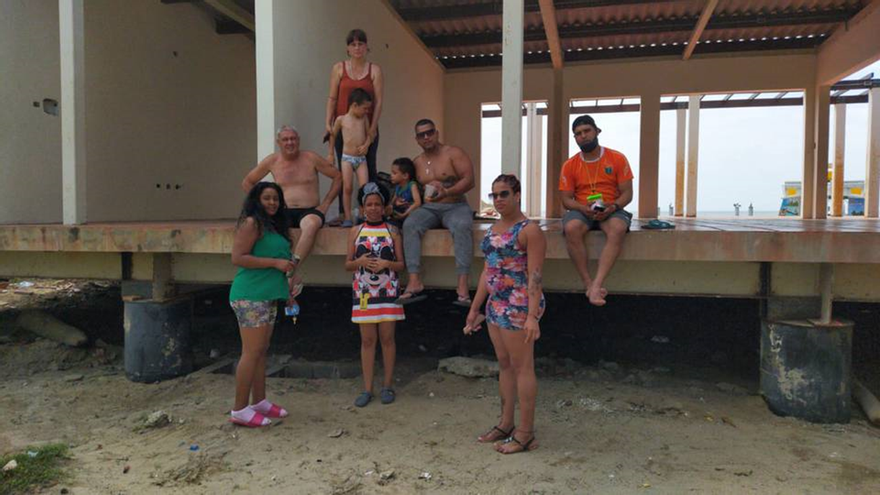
14ymedio, Lorey Saman, Mexico, 29 January 2021 — More than 100 Cubans have been stranded for 23 days in the Colombian border municipality of Necoclí, in the department of Antioquia, along with hundreds of Haitians, Venezuelans and other migrants. They are waiting to be transported by boat to a point in Panama in order to continue on to the United States.
The Colombian government announced on January 15 that it was extending the closure of land and river borders until March 1. The director of Migration Colombia, Francisco Espinosa, reported that due to the increase of cases and the worrying hospital situation, due to the high occupation of COVID-19 patients, the passage between Panama, Ecuador, Peru, Brazil and Venezuela was suspended.
According to Wilson Patiño, director of Migration in Antioquia, “it is not a time to travel”, but “to protect ourselves, in order to minimize the risks of COVID-19 infection”.
Necoclí has become a place with no way out for the migrants: “Every day more and more Cubans continue to arrive, becoming completely trapped in a nightmare”, describes Telemundo’s correspondent, from a makeshift camp where migrants, including small children and pregnant women, find themselves
“What prevents us from leaving is the sea, and I have a son with diarrhea and vomiting,” Cuban Odalys Trobajo, says with impotence, having been stuck halfway after Colombian authorities closed the border because of the pandemic, she tells the news channel.
In the last year, given the restrictions on mobility and quarantine due to COVID, as reported by the Colombian magazine Semana, the passage of migrants has decreased in that region. However, at the beginning of the year, the movement of travelers returned in “Necoclí, the next-to-last step before crossing the Gulf of Urabá and venturing on a path of death through the Darién Gap”, the article states.
First, travelers must reach Capurganá in order to board a boat that will take them to a point in Panamanian territory. “They don’t sell us a ticket because the borders are supposedly closed to us, the migrants, and the illegal boats are leaving,” Ailen Campos, another Cuban, tells Noticias Caracol.
Cuban Jany Perez tells Telemundo: “We are afraid to cross in the illegal boats, because when they arrive they throw you in the water and we don’t want to go through that moment”.
Father Aurelio Moncada, parish priest in a settlement near Capurganá, affirms that the number of migrants arriving in the area continues to rise, too much “for the coyotes (traffickers)”, reports the Colombian newspaper El Espectador. “Since October they have been smuggling them at night”, adds the priest.
For his part, the mayor of Necocli, Jorge Tobón, denounces the critical situation of migrants: “They are taking care of their ’necessities’ on the beaches, that is why we have decreed a health emergency and a humanitarian emergency”.
“I call on the national and departmental government to help us, because the truth is that we are overwhelmed,” insists the mayor. “I hope they help us, many of these migrants are already enduring hunger today. The children are sick too. Migration Colombia should also support us with these people.”
Data published by the International Organization for Migration, collected by El Espectador, point to the increase in the transit of migrants between Colombia and Panama: whereas in 2006 only 79 people crossed the Darien Gap, in 2012 the number rose to 1,777.
By 2015 there were already 29,289 migrants and a year later there were 30,055, “mostly Cubans hoping to quickly to reach the US” in view of the possibility, implemented by Barack Obama in January 2017, of the elimination of the wet foot/dry foot policy, which allowed Cubans who “touched land” in the United States to be on a path to citizenship.
Translated by: Hombre de Paz
____________
COLLABORATE WITH OUR WORK: The 14ymedio team is committed to practicing serious journalism that reflects Cuba’s reality in all its depth. Thank you for joining us on this long journey. We invite you to continue supporting us by becoming a member of 14ymedio now. Together we can continue transforming journalism in Cuba.
